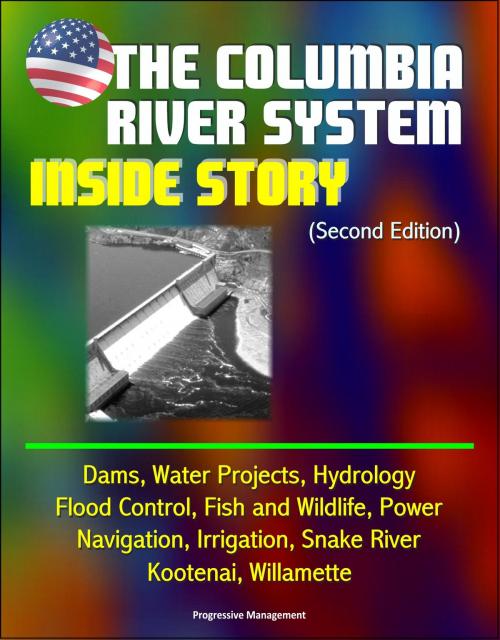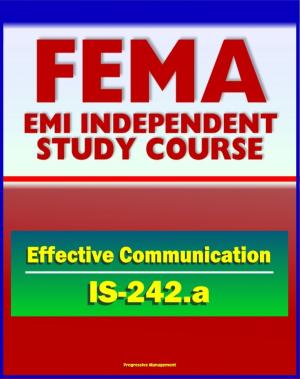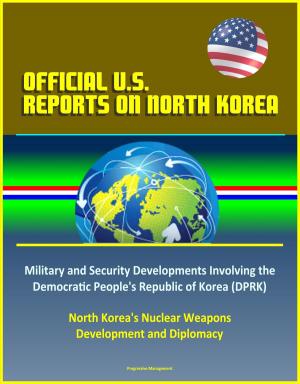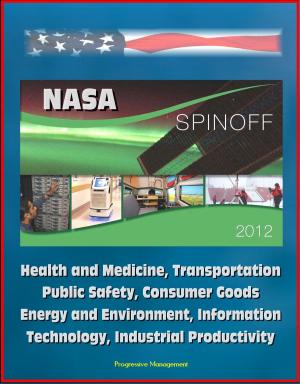The Columbia River System: Inside Story (Second Edition) - Dams, Water Projects, Hydrology, Flood Control, Fish and Wildlife, Power, Navigation, Irrigation, Snake River, Kootenai, Willamette
Nonfiction, Science & Nature, Technology, Engineering, Civil| Author: | Progressive Management | ISBN: | 9781311540164 |
| Publisher: | Progressive Management | Publication: | September 25, 2014 |
| Imprint: | Smashwords Edition | Language: | English |
| Author: | Progressive Management |
| ISBN: | 9781311540164 |
| Publisher: | Progressive Management |
| Publication: | September 25, 2014 |
| Imprint: | Smashwords Edition |
| Language: | English |
The Columbia River is one of the greatest natural resources in the western United States. The river and its tributaries touch the lives of nearly every resident of the Pacific Northwest—from fostering world-famous Pacific salmon to supplying clean natural fuel for 50 to 65 percent of the region's electrical generation. Since early in the 20th century, public and private agencies have labored to capture the benefits of this dynamic river. Today, dozens of major water resource projects throughout the region are fed by the waters of the Columbia Basin river system. Through cooperative efforts, floods that periodically threaten development near the river can be controlled.
This publication presents a detailed explanation of the planning and operation of the multiple-use dams and reservoirs of the Columbia River system. It describes the river system, those who operate and use it, the agreements and policies that guide system operations, and annual planning for multiple-use operation. A glossary and a reference list can be found at the end of this document. The Inside Story was originally written for the participants in a multiyear environmental study of river operations called the Columbia River System Operation Review (SOR). The SOR was conducted jointly by the U.S. Army Corps of Engineers (Corps), the U.S. Bureau of Reclamation (Reclamation), and the Bonneville Power Administration (BPA). In 1995, as a result of actions under the Endangered Species Act (ESA) and the SOR, the three Federal agencies formally adopted an operating strategy for the river system that supports the recovery of Columbia River Basin fish listed under the ESA. The strategy incorporated the recommendations of the National marine Fisheries Service (NMFS) and the U.S. Fish and Wildlife Service (USFWS) to recover several stocks of Snake River salmon and the Kootenai River white sturgeon. The SOR provided the environmental analysis of the ESA strategy and led to renewal of the Pacific Northwest Coordination Agreement (PNCA) and other agreements related to the Columbia River Treaty (Treaty) between the United States and Canada.
Chapter I - Introduction * Chapter II - The Columbia River System * A. The Basin * B. Uses of the River System * C. The Dams and Water Projects * D. The Coordinated Columbia River System * Chapter III - The Agencies and the Operating Agreements * A. The Forecasters * B. Project Owner/ Operators & Affiliated Agencies * C. The NMFS Regional Implementation Forum * D. The Operating Agreements and Guidelines * Chapter IV - System Operation -The Big Picture * A. Hydrology of the Basin * B. The Drivers of System Operations * C. Overview of System Operations * Chapter V - Multiple Uses of the System * A. Flood Control * B. Fish and Wildlife * C. Power Generation * D. Navigation * E. Irrigation * F. Recreation * G. Water Supply and Water Quality * H. Cultural Resources * VI. System Planning & Operations * A. Current Operating Strategy * B. The PNCA Planning Process * C. In-Season Management for Salmon * D. Real-Time Operations * E. System Operation In Action * Chapter VII - Conclusion * Appendix A - Pacific Northwest Hydro Projects * Appendix B - Glossary * Appendix C - Acronyms and Abbreviations * Appendix D - Reference List
The Columbia River is one of the greatest natural resources in the western United States. The river and its tributaries touch the lives of nearly every resident of the Pacific Northwest—from fostering world-famous Pacific salmon to supplying clean natural fuel for 50 to 65 percent of the region's electrical generation. Since early in the 20th century, public and private agencies have labored to capture the benefits of this dynamic river. Today, dozens of major water resource projects throughout the region are fed by the waters of the Columbia Basin river system. Through cooperative efforts, floods that periodically threaten development near the river can be controlled.
This publication presents a detailed explanation of the planning and operation of the multiple-use dams and reservoirs of the Columbia River system. It describes the river system, those who operate and use it, the agreements and policies that guide system operations, and annual planning for multiple-use operation. A glossary and a reference list can be found at the end of this document. The Inside Story was originally written for the participants in a multiyear environmental study of river operations called the Columbia River System Operation Review (SOR). The SOR was conducted jointly by the U.S. Army Corps of Engineers (Corps), the U.S. Bureau of Reclamation (Reclamation), and the Bonneville Power Administration (BPA). In 1995, as a result of actions under the Endangered Species Act (ESA) and the SOR, the three Federal agencies formally adopted an operating strategy for the river system that supports the recovery of Columbia River Basin fish listed under the ESA. The strategy incorporated the recommendations of the National marine Fisheries Service (NMFS) and the U.S. Fish and Wildlife Service (USFWS) to recover several stocks of Snake River salmon and the Kootenai River white sturgeon. The SOR provided the environmental analysis of the ESA strategy and led to renewal of the Pacific Northwest Coordination Agreement (PNCA) and other agreements related to the Columbia River Treaty (Treaty) between the United States and Canada.
Chapter I - Introduction * Chapter II - The Columbia River System * A. The Basin * B. Uses of the River System * C. The Dams and Water Projects * D. The Coordinated Columbia River System * Chapter III - The Agencies and the Operating Agreements * A. The Forecasters * B. Project Owner/ Operators & Affiliated Agencies * C. The NMFS Regional Implementation Forum * D. The Operating Agreements and Guidelines * Chapter IV - System Operation -The Big Picture * A. Hydrology of the Basin * B. The Drivers of System Operations * C. Overview of System Operations * Chapter V - Multiple Uses of the System * A. Flood Control * B. Fish and Wildlife * C. Power Generation * D. Navigation * E. Irrigation * F. Recreation * G. Water Supply and Water Quality * H. Cultural Resources * VI. System Planning & Operations * A. Current Operating Strategy * B. The PNCA Planning Process * C. In-Season Management for Salmon * D. Real-Time Operations * E. System Operation In Action * Chapter VII - Conclusion * Appendix A - Pacific Northwest Hydro Projects * Appendix B - Glossary * Appendix C - Acronyms and Abbreviations * Appendix D - Reference List















